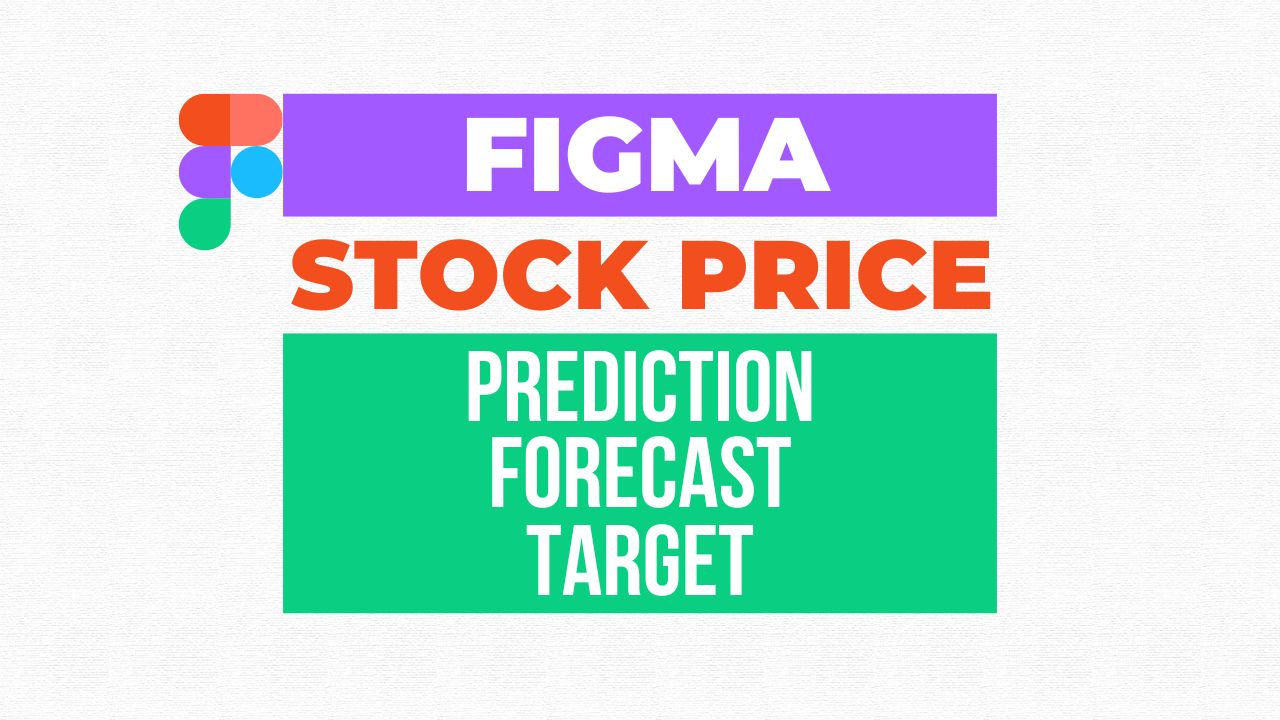Figma, Inc. (FIG), a leading cloud-based design platform, filed for its IPO on July 1, 2025, and it is trading on the NYSE under the ticker “FIG”.
Figma’s IPO was officially priced at $33.00 per share on July 31, 2025, raising $1.2 billion and valuing the company at $19.3 billion.
This article explores potential price forecasts for FIG, driven by robust revenue growth and AI innovation, though tempered by competitive and regulatory risks.
Also Read – Should You Go for Figma’s IPO? – 8 Things to Consider
1. Company Overview
Figma, Inc., founded in 2012 by Dylan Field and Evan Wallace, is a San Francisco-based SaaS leader specializing in collaborative UI/UX design. Its cloud-based platform enables real-time teamwork for designers, developers, and product teams, serving clients such as Netflix, Alphabet, and Uber. Figma has built a base of approximately 450,000 customers and 4 million monthly active users. According to its S-1 filing, Figma reported $228.2 million in Q1 2025 revenue, representing a 46% year-over-year increase, along with $44.9 million in net income.
| Founded In | 2012 |
|---|---|
| Founders | Dylan Field, Evan Wallace |
| IPO Date | Expected late July/early August 2025 |
| Ticker Symbol | FIG |
| Stock Exchange | NYSE |
| Sector | Technology |
| Industry | Software—Application |
| Specialization | Collaborative design, UI/UX, SaaS |
Figma’s trailing twelve-month revenue of $821 million and its gross margin of 91% underscore its financial strength. The company’s expansion of AI-powered features through tools like Figma Make and Figma Buzz, along with its focus on new global markets such as Brazilian Portuguese localization, positions it to compete more directly against players like Adobe and Canva.
2. The Stock Market: Fundamentally Driven
Figma’s IPO filing on July 1, 2025, comes after it abandoned a $20 billion acquisition deal with Adobe in 2023, which resulted in Figma receiving a $1 billion termination fee. Its 46% Q1 2025 revenue growth and a reported $20 billion valuation on secondary markets signal high investor interest.
Recent Financial Snapshot
| Year | Revenue ($M) | Net Income ($M) | Gross Margin (%) | Free Cash Flow ($M) |
|---|---|---|---|---|
| 2023 | 505 | 738 | 90 | N/A |
| 2024 | 749 | -732 | 91 | N/A |
| Q1 2025 | 228.2 | 44.9 | 91 | 90 (est.) |
Figma’s loss in 2024 reflected a one-time $732 million stock compensation expense. Despite that, the company’s free cash flow margin of more than 40% in Q1 2025 highlights strong profitability. Backers such as Sequoia and Kleiner Perkins, who hold a combined 45% stake before the IPO, are seen as key supporters of Figma’s growth story.
Valuation Multiples
| Metric | Figma (FIG) | Adobe (ADBE) | Atlassian (TEAM) |
|---|---|---|---|
| P/S Ratio | 24.4 (est.) | 11.2 | 12.8 |
| P/E Ratio | N/A | 46.7 | N/A |
3. Sector Overview
Figma operates within the Technology sector, specifically in the Software – Application industry, which is expected to see strong demand thanks to SaaS and AI-led innovations. The SaaS and design technology outlook for 2025 through 2030 is considered positive, supported by widespread digital transformation.
The sector benefits from steady cloud-based software growth, with annual rates around 15% according to industry researchers. Generative AI is also reshaping how design workflows function. However, antitrust regulations may impact future mergers and acquisitions in this sector, and higher interest rates could cool investor enthusiasm for growth stocks.
In recent months, the iShares Expanded Tech-Software ETF (IGV) advanced 12% in 2024, while Figma’s 46% revenue growth outperformed many peers. Even though tariffs announced by the Trump administration in 2025 created IPO delays, Figma’s decision to proceed highlights confidence in market conditions.
Also Read – Is there any difference between a sector and an industry?
4. Industry Analysis
Figma’s competitors include new AI-based design tools from startups like Lovable, which could pressure Figma’s market share. Its global operations already account for over half of revenue, and its strong net dollar retention of 132% suggests loyal and growing subscription customers. Broader market sentiment has been supported by successful SaaS IPOs, including Circle’s recent sixfold gain.
Peers in the industry, such as Adobe, have struggled with products like XD, which lacked Figma’s collaboration strengths. Canva, meanwhile, has achieved a $49 billion valuation and is a significant competitive benchmark. Figma’s innovation in tools like Figma Make and Figma Sites, together with adding ServiceNow CEO Bill McDermott to its board, demonstrate its pivot to serving more enterprise customers.
5. Stock Growth and Fundamental Factors: FIG Price Prediction 2025–2030
Figma’s initial public offering (IPO) took place on July 31, 2025, with shares priced at $33.00, raising $1.2 billion and valuing the company at $19.3 billion. The stock began trading on the New York Stock Exchange (NYSE) under the ticker “FIG”, with early indications suggesting an opening price around $95 per share due to strong demand (the IPO was 40x oversubscribed).
Figma’s robust fundamentals include an annualized recurring revenue (ARR) of $912 million based on Q1 2025 revenue of $228.2 million, reflecting 46% year-over-year growth. AI feature rollouts, such as Figma Make and Agentic AI, are projected to add $100 million in revenue by 2027. The company serves over 1,000 customers generating at least $100,000 in annual recurring revenue, a 47% increase year-over-year, and continues to expand its international user base, with 50% of revenue coming from non-U.S. markets, supporting a positive outlook for sustained growth.
The company’s Q1 2025 revenue spike of 46% and its reported 13 million monthly active users illustrate strong momentum going into its public debut.
6. Three-Scenario Forecast Model
Using bear, base, and bull scenarios with assumed compound annual growth rates of 5%, 15%, and 25% respectively, and assuming a speculative $105 listing price, the potential trajectories are outlined below.
| Year | Bear Case | Base Case | Bull Case |
|---|---|---|---|
| 2025 | $75.00 | $105.00 | $120.00 |
| 2030 | $95.00 | $160.00 | $220.00 |
| 2040 | $150.00 | $400.00 | $750.00 |
| 2050 | $250.00 | $700.00 | $2,000.00 |
7. Macro Trends & Strategic Roadmap
Figma’s growth aligns with several major global themes. The global SaaS market could cross $1 trillion in annual spending by 2030, supported by enterprise AI adoption, which may account for 20% of Figma’s revenue by 2040. International expansion could push overseas revenues to 60% of Figma’s total sales by the end of this decade. Government contracts provide a measure of stability as Figma courts public sector opportunities.
Strategically, the company plans to deepen its AI capabilities with products like Figma Buzz aimed at marketing teams, and it may use IPO proceeds for around $500 million in acquisitions by 2030. Additional language localizations beyond Brazilian Portuguese are also planned to drive new customer acquisition.
8.Risk Factors
Figma faces competitive risks, particularly from emerging AI-based design startups that could cut into its projected market share by 5% by 2030. Valuation remains elevated, with a price-to-sales ratio around 24.4 that could see corrections if market conditions worsen. Antitrust concerns may also limit future acquisition opportunities, while global trade uncertainties like tariffs could trim IPO demand by 10%.
9. Summary Forecast Table
| Year | Base-Case Price | Key Drivers |
|---|---|---|
| 2025 | $105.00 | IPO momentum, 46% revenue growth |
| 2030 | $160.00 | AI tools, international expansion |
| 2040 | $400.00 | Enterprise adoption, acquisitions |
| 2050 | $700.00 | SaaS leadership, AI expansion |
10. Long-Term Growth Prospects
Figma’s net dollar retention rate of 132% and a valuation nearing $20 billion point to significant growth potential. AI competition and tariff risks remain, but its focus on the enterprise market and international expansion make FIG a potentially compelling investment for the long term.
This article is for informational purposes only and should not be considered financial advice. Investing in stocks, cryptocurrencies, or other assets involves risks, including the potential loss of principal. Always conduct your own research or consult a qualified financial advisor before making investment decisions. The author and publisher are not responsible for any financial losses incurred from actions based on this article. While efforts have been made to ensure accuracy, economic data and market conditions can change rapidly. The author and publisher do not guarantee the completeness or accuracy of the information and are not liable for any errors or omissions. Always verify data with primary sources before making decisions.

